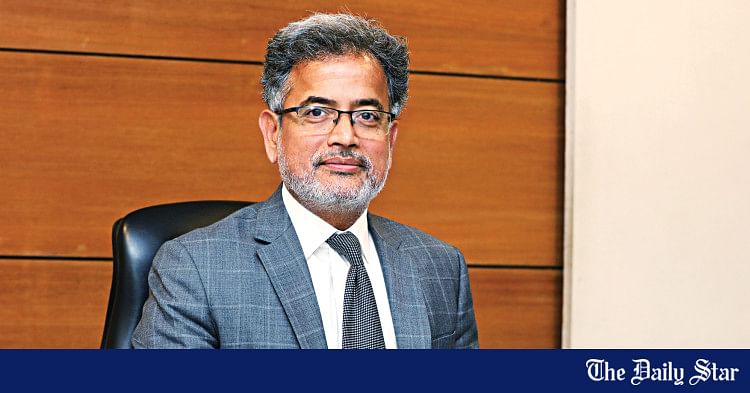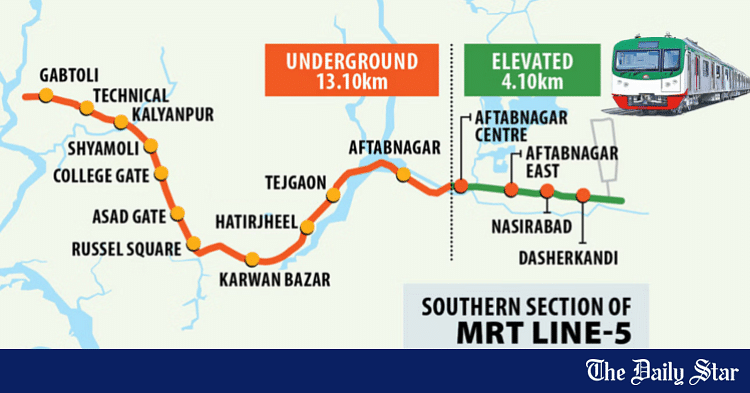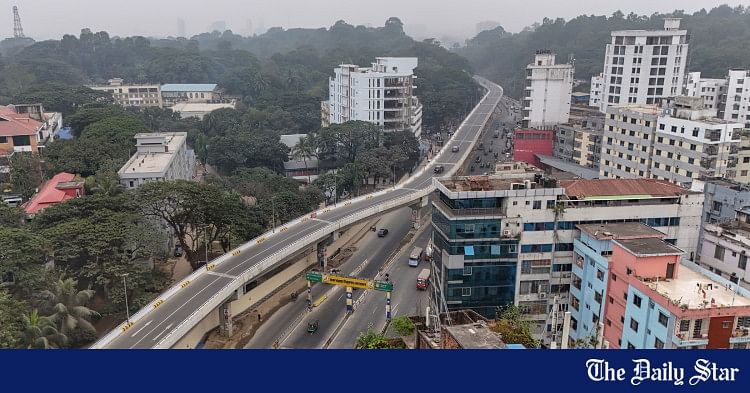Saif
Senior Member
- 13,657
- 7,405
- Origin

- Axis Group

Rapid urbanisation: Boon or bane?
Shiabur Rahman
Published :
Jan 30, 2025 23:32
Updated :
Jan 30, 2025 23:32

The world is fast getting urbanised for an array of benefits - better job opportunities, increased income and better access to education and healthcare, to name but a few. Several small developed and high-income nations like Kuwait, Singapore and Monaco have reached 100 percent urbanisation while developing and even least developed countries are experiencing fast urbanisation. According to the World Population Review, Burundi saw the highest annual urbanisation rate (5.43 per cent) in 2024 followed by Uganda (5.41 per cent), Syria (5.38 per cent) and Tanzania (4.89 per cent). Bangladesh is no exception to the trend. Official data show the country experienced an annual urbanisation rate between 3.0 and 4.0 per cent over the last couple of years with its urban population reaching around 70 million in 2023 --- about 40 per cent of its total population at the time. But this growth in urban population, particularly in cities like Dhaka and Naraynganj, has taken place without proper infrastructure, planning, or sustainability measures in place, posing significant challenges to the country's development. It is obvious that the challenges will be even greater in the future as the United Nations Development Programme (UNDP) estimates Bangladesh's urban population to be 86.5 million by 2030, and over 100 million by 2050.
Urbanisation is a key driver of economic growth, but its unplanned expansion leads to numerous social, economic, and environmental problems. Several factors are responsible for unplanned urbanisation in Bangladesh. The lack of employment opportunities, vulnerability to climate change, and poor living conditions in rural areas force millions to migrate to cities in search of better livelihoods. Thus the rapid increase in population puts immense pressure on urban areas. The absence of a strong regulatory framework and lax enforcement of the existing ones also contribute greatly to the unplanned expansion of cities.
Major cities in Bangladesh are home to millions living in overcrowded slums with inadequate access to basic services such as transport system, water, sanitation and healthcare. Unplanned urbanisation has led to the destruction of wetlands, deforestation, and pollution of rivers, worsening climate change-related vulnerabilities.
The government has taken several initiatives to tackle urbanisation challenges, but initiatives are inadequate and their implementation is weak. Policies such as the Dhaka Structure Plan 2016-2035 and the Detailed Area Plan (DAP) 2022-2035 aim to regulate urban growth but are often not effectively enforced. The ongoing Mass Rapid Transit (MRT) project aims to reduce traffic congestion and improve public transport. Housing projects of the Rajdhani Unnayan Kartripakkha (RAJUK) and the National Housing Authority focus on improving the living conditions of city dwellers. Despite all these efforts, challenges such as corruption, bureaucratic tangles and a lack of coordination among agencies hinder progress.
Urbanisation is inevitable. The authorities cannot stop it. What they can do is to ensure that it takes place in a planned way. A multi-pronged approach involving all necessary agencies and stakeholders is necessary to address unplanned urbanisation. An autonomous urban regulatory authority can be established to ensure better coordination and implementation of urban policies. Efforts should be made to promote regional development by creating economic hubs outside major cities to reduce excessive migration pressure on them. Investment in road networks, public transport, and sustainable housing projects is necessary to reverse the negative impact of rapid population growth. Public-private partnerships to develop affordable housing solutions should be encouraged to help address the housing crisis. Strict enforcement of environmental laws is necessary to protect wetlands, reduce pollution and promote green urban planning.
Shiabur Rahman
Published :
Jan 30, 2025 23:32
Updated :
Jan 30, 2025 23:32
The world is fast getting urbanised for an array of benefits - better job opportunities, increased income and better access to education and healthcare, to name but a few. Several small developed and high-income nations like Kuwait, Singapore and Monaco have reached 100 percent urbanisation while developing and even least developed countries are experiencing fast urbanisation. According to the World Population Review, Burundi saw the highest annual urbanisation rate (5.43 per cent) in 2024 followed by Uganda (5.41 per cent), Syria (5.38 per cent) and Tanzania (4.89 per cent). Bangladesh is no exception to the trend. Official data show the country experienced an annual urbanisation rate between 3.0 and 4.0 per cent over the last couple of years with its urban population reaching around 70 million in 2023 --- about 40 per cent of its total population at the time. But this growth in urban population, particularly in cities like Dhaka and Naraynganj, has taken place without proper infrastructure, planning, or sustainability measures in place, posing significant challenges to the country's development. It is obvious that the challenges will be even greater in the future as the United Nations Development Programme (UNDP) estimates Bangladesh's urban population to be 86.5 million by 2030, and over 100 million by 2050.
Urbanisation is a key driver of economic growth, but its unplanned expansion leads to numerous social, economic, and environmental problems. Several factors are responsible for unplanned urbanisation in Bangladesh. The lack of employment opportunities, vulnerability to climate change, and poor living conditions in rural areas force millions to migrate to cities in search of better livelihoods. Thus the rapid increase in population puts immense pressure on urban areas. The absence of a strong regulatory framework and lax enforcement of the existing ones also contribute greatly to the unplanned expansion of cities.
Major cities in Bangladesh are home to millions living in overcrowded slums with inadequate access to basic services such as transport system, water, sanitation and healthcare. Unplanned urbanisation has led to the destruction of wetlands, deforestation, and pollution of rivers, worsening climate change-related vulnerabilities.
The government has taken several initiatives to tackle urbanisation challenges, but initiatives are inadequate and their implementation is weak. Policies such as the Dhaka Structure Plan 2016-2035 and the Detailed Area Plan (DAP) 2022-2035 aim to regulate urban growth but are often not effectively enforced. The ongoing Mass Rapid Transit (MRT) project aims to reduce traffic congestion and improve public transport. Housing projects of the Rajdhani Unnayan Kartripakkha (RAJUK) and the National Housing Authority focus on improving the living conditions of city dwellers. Despite all these efforts, challenges such as corruption, bureaucratic tangles and a lack of coordination among agencies hinder progress.
Urbanisation is inevitable. The authorities cannot stop it. What they can do is to ensure that it takes place in a planned way. A multi-pronged approach involving all necessary agencies and stakeholders is necessary to address unplanned urbanisation. An autonomous urban regulatory authority can be established to ensure better coordination and implementation of urban policies. Efforts should be made to promote regional development by creating economic hubs outside major cities to reduce excessive migration pressure on them. Investment in road networks, public transport, and sustainable housing projects is necessary to reverse the negative impact of rapid population growth. Public-private partnerships to develop affordable housing solutions should be encouraged to help address the housing crisis. Strict enforcement of environmental laws is necessary to protect wetlands, reduce pollution and promote green urban planning.












